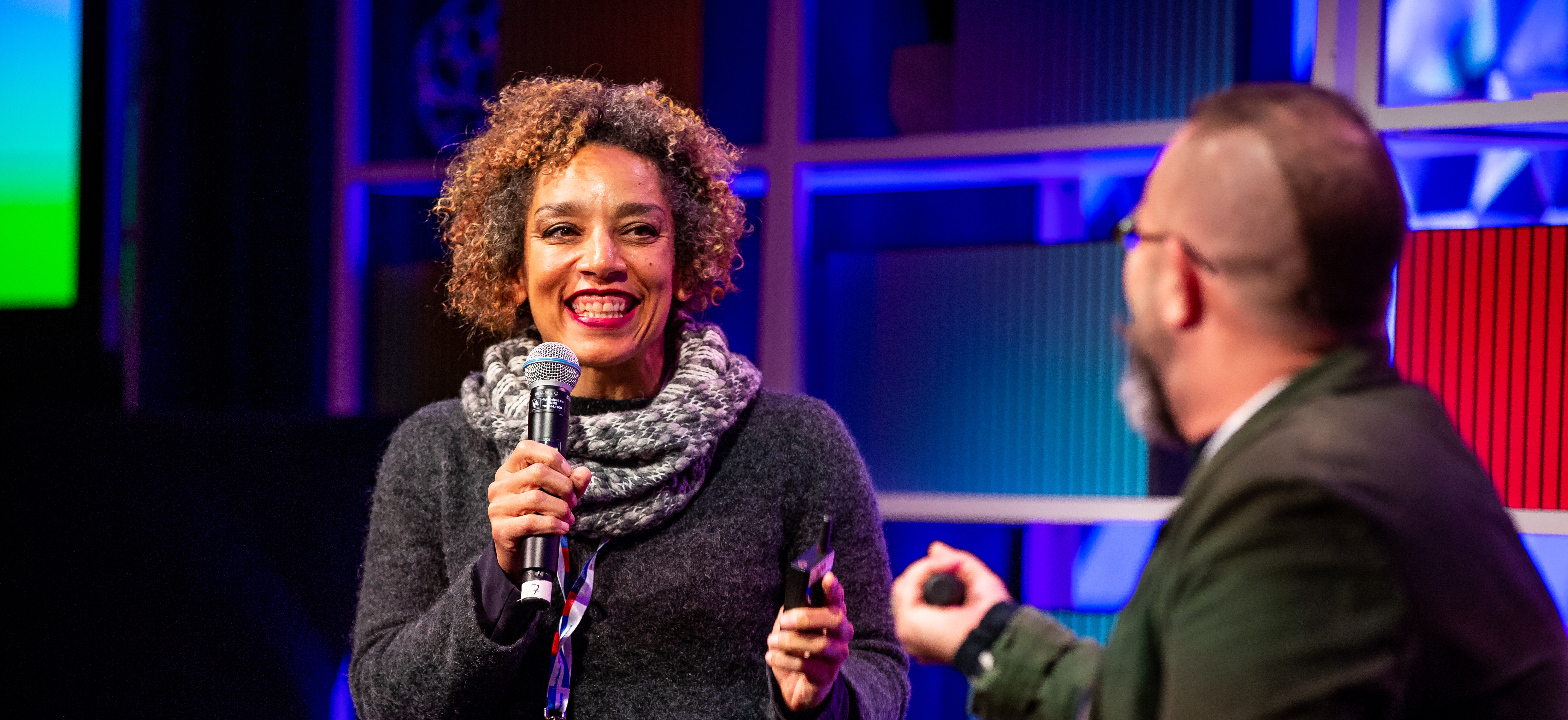Over dinner, my friend Rosemarie Garland-Thomson observes that it’s not just that disabled people use technologies, it’s that we use them in ways beyond what their designers imagined. She’s right. The ways disabled people use our technologies are beautiful and generative; they are also deeply meaningful. She points me to the importance of the everyday, highlighting how we don’t just use devices to accommodate a disability. Yes, there is a gap between us and the non-disabled world; access technologies can help bridge those differences and enable us to do what we need to do. But this is not all there is to the story. Disabled people’s use of technology shows how design both functions in the world we have and helps us imagine the future.
I consider her words as I chew, literally ruminating. Words have meaning. “Devices” are something separate, something that we can pick up and put down. “Technologies” are somehow different. They can become bodies, ways of knowing the world.
As a dancer, choreographer and user of certain technologies, I welcome this sense of integration around disability and technology. It allows me to create movement from a place of oneness and completion. My disabled body moves because my wheelchair takes me across the floor, but my wheelchair is also part of my body. As a dancer and choreographer, I make choices about the ways in which audiences see my upper body. I make the very same choices about how audiences perceive my chair visually and experience its movement both visually and viscerally.
The unusual ways I use my crutches and wheelchair remind me that disability drives technological innovation. Much of what we know about how minds, bodies, medications, chips, and wire interact is because of disability. Disability brings to the surface our core values as a society. When we make exoskeletons, voice recognition technologies, navigation devices, limbs, chips that enable users to move body parts with their brains, we are answering questions about how we relate to each other and how we value our selves, our bodies, and our minds. What we invest in, what we create tells us about our selves and our values.
HUBweek’s theme this year was “We The Future.” It’s an odd, interesting question for me, because so many contemporary cultural and technological imaginations do not envision disabled people as active presences in the future.
In medical environments, disability will be curable, and/or genetic selection will prevent disability in the first place. America has not yet had a public conversation about humanity, eugenics, and the risks of medical progress, but the art forms in which we imagine the future all too frequently fail to show images of disabled people as valuable citizens. We are villains, possibly victims — or we do not exist at all.
In Boston, disability conversations are detectable in recent legislation concerning end-of-life choices that reveal what people think is a worthwhile life. They are also apparent in Boston’s soaring tech and design scenes. Design for disabled people is seen as access work, something that is dictated by law, but not often an integrated part of the aesthetic or functionality of the product itself.
Where does art fit in? I imagine a rich and expansive disability future built upon our culture, our art and upon technology. Dance is built around the expressive capacity of the body. When disabled people dance, our use of technology and body changes what non-disabled people know. This new information is critical for all of us to understand how beauty, politics, culture, and technology intertwine themselves in the future. Finding the future is the work of “We the Future.”
As Rosemarie and I leave the restaurant, we both notice that someone has left a disability technology outside. We smile and wonder about its safety. We recognize that its presence is another piece of information about how people and technology are embodied. To silence the beeping of my car, I clunk my seatbelt into place. I tell my phone to navigate me home, bypassing traffic. The car tells me it has enough battery power, and I pull out silently into the night, wondering how disabled people will inform the creation of self-driving cars.
---
Award-winning choreographer Alice Sheppard creates movement that challenges conventional understandings of disabled and dancing bodies. Engaging with disability arts and culture, Alice's work attends to the complex intersections of disability, gender, and race.
